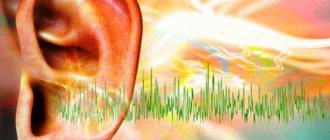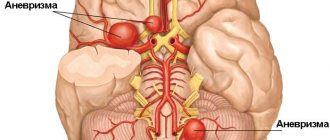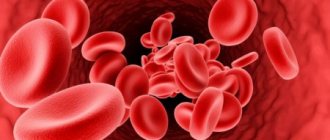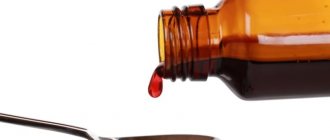Complex form of VSD
The decision to serve in the army is made by a special military medical commission. She also issues a conclusion - whether the conscript is fit or submits a petition for release. The basis for this is the presence of specific diseases. For example, neurosis and army are compatible concepts, since the illness is not serious. The VSD is not on the 2016 list, so they can take it into service.
The nuance is that the neurotic syndrome itself consists of dozens of concomitant diseases (hypertensive and vegetative manifestations, etc.). Vegetative-vascular dystonia disrupts the functioning of many organs, as well as the nervous, circulatory and digestive systems. Severe symptoms of diseases complicate the course of the syndrome and lead to complications that contribute to the emergence of specific diseases.
NDC for hypertensive/mixed type and the army
Now let's take a closer look at each type of NDC.
Practices may vary in different regions. For example, in St. Petersburg and Moscow, it is almost impossible to be exempt from conscription if you have hypertension or a mixed type. Young people aged 18-26 years rarely have such severe disorders as those described in the Schedule of Diseases.
Typically, conscripts are examined under Article 47, paragraph “b”: “NCA with moderate manifestations.” In such situations, the patient is recognized as fit and sent to serve.
Military medical examination
Generally, conscripts are released from service due to cardiac or circulatory problems. The diagnosis and category of the disease are indicated in the conclusion. Are people with mixed military forces accepted into the army?
Yes, but if some of the symptoms of vegetative-vascular dystonia are in the acute stage, then they are classified as a separate pathology (for example, astheno, hypertension). And if the disease is among the grounds for exemption from service, the military medical commission issues an appropriate conclusion.
Do they take into the army with VSD? Any disturbances in the functioning of the body are recorded by military doctors. If deviations from the norm are detected, written notes are taken. Then the doctor sends the conscript for examination. If the diagnosis is not on the list, the conscript will be recruited.
In what cases are people with VSD not accepted into the army?
When conscripts come for a medical examination, doctors at the military registration and enlistment office determine their suitability for the army according to the Schedule of Diseases. This is a document that describes all the diseases for which conscription is either prohibited or permitted, but with some restrictions.
If you open the Schedule of Diseases and find Article 24, you will see a mandatory condition for exemption from the army under the VSD :
- exacerbations appear at least once a month and are accompanied by fainting (syncope),
- every syncope must be documented.
Thus, the diagnosis of VSD itself does not guarantee exemption from conscription. If it manifests itself in the form of dizziness, darkening of the eyes, rapid heartbeat, the conscript will be taken into service. If a young man loses consciousness less than once a month, he is considered fit. And if the patient cannot confirm the attacks with medical documents, he will also be sent to the troops.
Our clients do not serve in the military
call me back
Get a free consultation by phone:
8
or request a call back
Diseases incompatible with service
Do they take into the army with vegetative vascular dystonia? There are a number of diseases that are listed for exemption from service. Some of the most common and common ones are:
- vascular pathologies that lead to circulatory disorders;
- vascular dystonia of the hypertensive type;
- left ventricular dysfunction;
- heart failure;
- astheno, accompanied by severe complications;
- neurocirculatory asthenia.
This is not the entire list of diseases. You can begin to undergo examination before the medical examination if the conscript experiences frequent fainting, a poor cardiogram, etc.
If neurocirculatory dystonia is detected, a delay will require additional symptoms (sudden surges in pressure, decreased ability to work), and the army may not be available.
Symptoms of the disease
Perhaps the essence of the manifestation of the disease will become more clear if we give examples of some symptoms. But it should be borne in mind that they rarely appear in a complex, and besides, the individuality of the organism gives different pictures. The first sign is excessive fatigue caused by a state of neurosis, sleep and appetite are disturbed. A feeling of causeless anxiety appears. Sometimes the symptoms are transposed in the form of physical sensations, for example, a nagging pain in the chest area may be observed. It is usually generated by a feeling of fear or anxiety. Parameters such as blood pressure and pulse change.
The feeling that there is not enough air is also considered a manifestation of NCD. The so-called lump in the throat is accompanied by sweating and rapid breathing. The regulatory functions of the heart rate experience quite noticeable changes. A person may feel rapid pulsation, which manifests itself visually in the neck and head; this symptom leads to sleep disturbance. The most unpleasant thing is the parallel occurrence of headaches, which can drag on for a long time, even if the external source is no longer present.
Read more Stop prohibited with up and down arrows
Now the essence of the disease becomes more clear; it is expressed as the body’s reaction to certain irritants. These can include both external physical factors and emotional stimuli. It is not for nothing that NCD disease is called a disease “not of the body, but of the soul.”
What categories exist for exemption from the army?
The grounds on which a conscript is released from service are divided into several categories. After a complete medical examination, a final diagnosis is made. Then the conscript turns to the military commissar. He makes the final decision whether or not to join the service. There are three categories of exemption:
- “B” - in peacetime, the conscript is removed from service, but is enlisted in the reserves;
- “G” - the potential serviceman is given a temporary deferment (for example, if astheno is detected);
- “D” - the conscript is not at all suitable for the army.
The deferment is given only for 6 months or no more than a year. This period is intended to treat the disease (for example, getting rid of panic attacks). If astheno is detected, the issue is resolved individually. After the deferment, the conscript is required to undergo a medical examination again. Exemption is given only if there are categories other than “G”. In all other cases, people with VSD are taken into the army.
Types of disease
Vegetovascular dystonia can be of four types:
- Hypertensive. In this case, the pressure is constantly increased, and the head often hurts. The patient experiences constant and sudden changes in body temperature. Heavy sweating may occur, the face may become red, or the skin may become marbled in color.
- With VSD of the hypotonic type, the army may be contraindicated. Since the patient has low blood pressure, weakness, drowsiness and dizziness appear. Loss of orientation and sudden fainting are possible. Especially when changing vertical and horizontal positions.
- Cardiological. This type of pathology manifests itself in patients suffering from tachycardia, arrhythmia or heart pain. When examining the reasons that could lead to VSD are not identified.
- Mixed. It combines partially or completely the symptoms listed above.
Are the army and the VSD compatible?
Symptoms of vegetative-vascular dystonia rarely lead to a delay or exclusion from military service. However, in VSD there are extensive signs of many diseases, so the conclusion is made after a full examination. Most of the symptoms will not interfere with military service, but it can act as a cure. For example:
- Poor physical shape can be corrected by exercise and exercise. In addition, the conscript is often in the fresh air.
- There is simply no room left for obsessive thoughts and neurotic syndrome. This is facilitated by constant employment and a military team that successfully fights depression.
- The conscript becomes not only stronger physically, but also mentally, and panic attacks disappear. He develops a sense of purpose. Composure and many other positive qualities.
Military service may be prohibited for a conscript with panic attacks. If the illness is serious, then it is necessary to obtain an exemption from military duty. For example, with VSD of the hypertensive type.
What is VSD?
VSD - what is it in simple terms? This is vegetative-vascular dystonia. This syndrome previously had no clear definition. And it was given to almost everyone if the cause of the ailment was not entirely clear. At the moment, VSD has received a clear definition. This is a complex of symptoms caused by disturbances in the functioning of the autonomic nervous system. She is responsible for:
- the nervous structure of the human body, which controls the functioning of all internal organs;
- creation of hormones;
- heart rhythms;
- lung activity and so on.
What to do if the required category was not given?
Since VSD is considered simply a neurotic syndrome that combines the symptoms of many diseases, liberation based on fragments of the manifestation of pathology is not given. It happens that doctors do not make a diagnosis, believing that the disease has not yet manifested itself, and the symptoms are quite distant.
Then the conscript has to go to serve. Having been diagnosed with VSD, he needs to take care of his health independently. If even slight signs of illness appear, you need to consult a doctor.
Frequent checks are very important, since living conditions have changed significantly from free life. NPD of the hypertensive type may appear. It is unlikely that the conscript will be among the “black sheep”. Even healthy and strong guys often take three months to adapt.
Vegetative vascular dystonia is not a death sentence. If it occurs against the background of a serious illness, you will have to forget about military service, but when VSD manifests itself as isolated symptoms, this is not scary. It is also necessary to take into account the fact that military service not only changes the daily routine, it contributes to the acquisition of excellent physical shape.
- What is depersonalization and how to treat it
- What is the reason for tachycardia after eating?
- How dangerous is vegetative-vascular dystonia?
- How to treat VSD of the hypertensive type
Neurocirculatory dystonia - what is it?
Literally translated, neurocircular dystonia means “disorder, disorder.”
Attention! Neurocircular dystonia is classified as a functional disorder (impaired functioning) of the main organs and systems without obvious organic changes.
NCD is not recognized as a separate disease; it is a complex of disorders in the functioning of the nervous, endocrine, cardiovascular and other systems. Disorders of autonomic function, as a rule, begin in adolescence against the background of hormonal changes in the body. Later, the disorders become persistent, often become fixed and develop into pathological forms:
- Metabolism is disrupted.
- Problems with breathing and digestion appear.
- The heart rhythm is lost (pain in the heart, shortness of breath and heaviness in the chest).
- Headaches and pressure surges occur in waves.
NDC is divided into types, depending on pressure indicators:
- Hypertensive type (pressure periodically increases).
- Hypotonic type (low blood pressure).
- Mixed type (pressure fluctuations).
Neurocirculatory dystonia of the hypertensive type is characterized by the following manifestations:
- The pressure rises above 140 mmHg. Art. (upper limit).
- Frequent dizziness and loss of balance.
- Sudden attacks of headaches associated with increased physical activity or changes in weather, climate change.
- An ultrasound of the heart may reveal problems with the mitral heart valve.
- Interruptions in heartbeat.
- The functioning of the lacrimal glands is disrupted (dry eye syndrome).
- Bowel dysfunction (constipation).
- Mental disorders (depression, irritability, feelings of melancholy and doom).
- Decreased level of performance, rapid fatigue.
Important: whether it is possible to serve in the army with these symptoms is a controversial question; it all depends on the degree of manifestation of the disease, the frequency of visits to specialists and documentary evidence of the disease.
Read more The simplest taxation system for individual entrepreneurs










